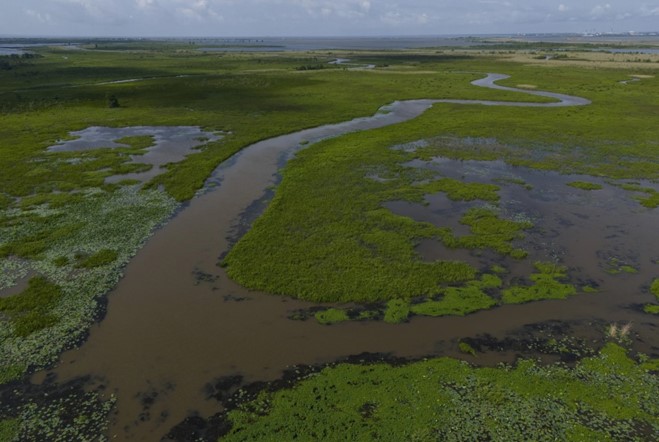
Conservationists Strive to Shield Alabama's Ecologically Rich Delta from Development and Climate Change
The Mobile-Tensaw Delta, a sprawling and vibrant ecosystem spanning over 400 square miles (1,036 square kilometers) of cypress swamps, oxbow lakes, marshland, hardwood stands, and rivers, is one of North America's richest aquatic habitats. Home to an astonishing variety of species, the delta is a critical component of a larger, diverse watershed that covers much of Alabama.
For 77-year-old Lucy Hollings, known as "Ms. Pie," the delta is the only place she has ever called home. Hollings, who still fishes daily and runs Cloverleaf Landing, a boat launch providing access to the river and delta, describes the area as a "piece of heaven."
The delta serves as a vital link between Alabama and the Gulf of Mexico, continuously exchanging energy between the river systems and the Gulf. It plays a crucial role in cleaning water, storing silt that could otherwise harm Mobile Bay's fisheries, and providing a spawning ground for numerous fish species. The delta also hosts hundreds of bird species, rare flowers, and carnivorous plants.
Recognizing the ecological importance of the entire Alabama watershed, residents, scientists, and environmentalists are working to protect it. Their efforts include acquiring land to prevent development, altering dams to restore fish habitats, and raising awareness of this unique ecosystem that many Americans are unfamiliar with.
Mitchell Reid, director of The Nature Conservancy in Alabama, emphasizes the importance of protecting what remains intact. "We can truly be protecting something that's here rather than trying to restore something that's been lost," he says.
Dubbed "America's Amazon," the delta boasts remarkable biodiversity. The warm and humid climate of Alabama has allowed species to thrive, with the delta and its watershed home to an unmatched diversity of fish, crawfish, turtles, and mussels. However, conservationists warn that protecting the delta requires safeguarding the entire watershed, which spans multiple states and includes tracts of forest, urban areas, and rivers that flow into Mobile Bay.
Despite its richness, the delta is not untouched by human activity. Logging, industrial pollution, and upstream dams have altered the ecosystem, leading to the extinction of dozens of freshwater species. These threats make conservation efforts even more urgent.
The Nature Conservancy recently purchased 8,000 acres (3,237 hectares) of forested wetland at the top of the delta, preventing it from being logged for wood pellets. The conservancy is also working with the U.S. Army Corps of Engineers to design fish bypasses around dams on the Alabama River, which could benefit multiple species and potentially lead to the rediscovery of the critically endangered Alabama sturgeon.
While conservationists have faced challenges, such as opposition to turning the delta into a national park, cooperation between private landowners, the government, and NGOs has led to progress. Improving access to waterways and natural areas is also seen as key to fostering public support for preservation efforts.
Jimbo Meador, an 82-year-old lifelong resident of the delta, reflects on the changes he has witnessed over the years. He believes that educating people about the delta's importance can help build support for conservation. "We're talking about this amazing, amazing place of life," says Reid. "But we also recognize that when you have so much, there's so much to lose."